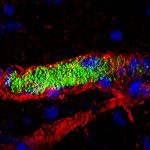Link to Pubmed [PMID] – 30969461
Link to DOI – 10.1002/cm.21521
Cytoskeleton (Hoboken) 2019 Feb; 76(2): 209-218
Here, we have reported that keratinocytes respond to the microflow-induced shear stress both at the collective and individual cell level. Using a microfluidic setup, we categorically showed that low shear stress of magnitude 0.06 dyne/cm2 could induce morphological variation and cytoskeletal reorganization in keratinocyte, whereas higher shear stress (6 dyne/cm2 ) resulted in cellular disruption. Using a series of blocker molecules specific to different mechanotransducers, we demonstrated the pivotal role of actin network in keratinocyte mechanoresponsiveness in conjugation with myosin and lipid rafts. Flow-induced shear stress also induced significant elevation in E-cadherin and Zonula occludens-1 (ZO-1) expression levels. We further showed that under the influence of shear stress, the extent of colocalization of E-cadherin and ZO-1 was more at the cell-cell junction that indicates an improvement in the epithelial phenotype. An increase in the expression of nuclear lamin was also observed in the sheared cells that suggest the transmission of mechanical signals to the nucleus. It is envisioned that this study may find its application in basic and applied organogenesis of the epidermis.

